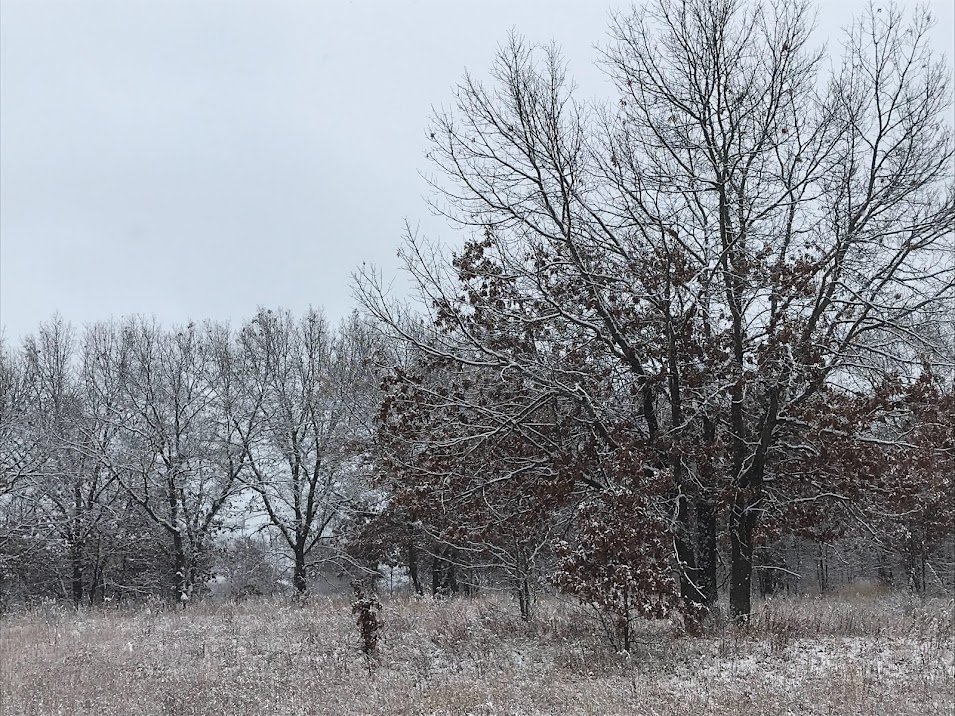A string of sunny days called for afternoon walks!
Right: the heron was intent on the frog it was eating so I could get a close-up photo.
On a clear day you can see the Chicago skyline from Illinois Beach State Park. I cropped and enlarged the photo and it may be a little blurry. The dredger is for the shoreline restoration project. Look to the left of it to see the skyscrapers.
# # # # #
Sparkling Triangles is finished.
I made a zipper insert for the back. I learned the technique from Mary Ellen Hopkins and I use it often. It's interesting to note that people have looked for an actual zipper. When I posted the photos on two FB groups the back got many comments ("most beautiful back ever!" "that's fabulous!").
 Here is the WIP I hinted at last week.
Here is the WIP I hinted at last week.
Someone on a FB group posted a photo of a quilt in this design. I promptly charted it out.
I made 3.5" (unfinished) black/white/gray hourglass units, the same as the inspiration photo, until I used up all the gray. I was aiming for 72 units and got 83. It's good to have some extras.
All the center units will point the same direction eventually.
I cut 5" x 10" rectangles of the light and dark prints and cut them diagonally. A partial seam is involved. I start with the top piece and work to the right. (For the left block: light, green, light, green.)
There's a lot of trimming required. I could have cut the light and dark rectangles smaller but I didn't bother to figure out the math.
The blocks are 7.5" unfinished.
All 72 blocks will make a quilt 56" x 63". When it's assembled I'll decide if I want to add a border.
# # # # #
 Julie Otsuka spoke at the ALA conference this summer when she received an award for her latest novel, The Swimmers. I read the copy I got at that program and enjoyed it. A couple of months later Ann (Fret Not Yourself) recommended Otsuka's second novel The Buddha in the Attic. I decided to read her first novel, When the Emperor Was Divine, and then the second.
Julie Otsuka spoke at the ALA conference this summer when she received an award for her latest novel, The Swimmers. I read the copy I got at that program and enjoyed it. A couple of months later Ann (Fret Not Yourself) recommended Otsuka's second novel The Buddha in the Attic. I decided to read her first novel, When the Emperor Was Divine, and then the second.
Emperor is about Japanese-Americans sent to internment camps, told from the first-person points of view of each member of one family: the mother who is holding it together, the daughter who is both gregarious and protective, the son whose effort to find his place in the world is turned upside-down, and the father who is sent away to a military camp. What struck me is how "everyday" their lives were before--and the story ends before the "after."
Buddha is thirty years before when mail-order brides sailed from Japan to their new, never-met husbands in California. Some matches were successful. Many were not. The women tell their stories together: "We were farmers, we were maids, we were mothers," echoing the way that history books lump people together. Later in the story they regain their own names.
 The Swimmers is contemporary, again told from an unusual point of view -- "you" is at first one of a group of avid swimmers who regularly work out at a pool "far underground." When the pool is closed for maintenance the common tie is broken and the group disperses. For Alice the routine was a tether. Without the pool her dementia worsens and she moves to a care facility. Alice's daughter is the "you" in the second part of her book, an observer and recaller of Alice's life. Otsuka's own mother's story forms part of her prize-winning book.
The Swimmers is contemporary, again told from an unusual point of view -- "you" is at first one of a group of avid swimmers who regularly work out at a pool "far underground." When the pool is closed for maintenance the common tie is broken and the group disperses. For Alice the routine was a tether. Without the pool her dementia worsens and she moves to a care facility. Alice's daughter is the "you" in the second part of her book, an observer and recaller of Alice's life. Otsuka's own mother's story forms part of her prize-winning book.
Otsuka's style is crisp, tight, polished. The stories are wonderful and thought-provoking.
Linking up with Oh Scrap! Sew and Tell Design Wall Monday






















































